Music
Trailers
DailyVideos
India
Pakistan
Afghanistan
Bangladesh
Srilanka
Nepal
Thailand
StockMarket
Business
Technology
Startup
Trending Videos
Coupons
Football
Search
Download App in Playstore
Download App
Best Collections
Technology
Google today announced an important update to its Cloud Build CI/CD platform that brings vulnerability scanning to all container images built using the service. Container Registry vulnerability scanning, which is now in beta, is meant to ensure that as businesses adopt modern DevOps practices, the container they eventually deploy are free of known vulnerabilities.
As Google rightly notes, the only way to ensure that security protocols are always followed is by automating the process. In this case, all new Cloud Build images are automatically scanned when Cloud Build creates an imageand stores it in the Container Registry.
The service uses the standard security databases to find new issues. Currently, the service can identify package vulnerabilities forUbuntu, Debian, and Alpine, with CentOS and RHEL support coming soon.
When it finds an issue, the service will notify the user, but businesses can also set up automatic rules (using Pub/Sub notifications and Cloud Functions) to take actions automatically. Users also get detailed reports about the severity of the vulnerability, VCSS scores, which packages were affected and whether therea fix available already.
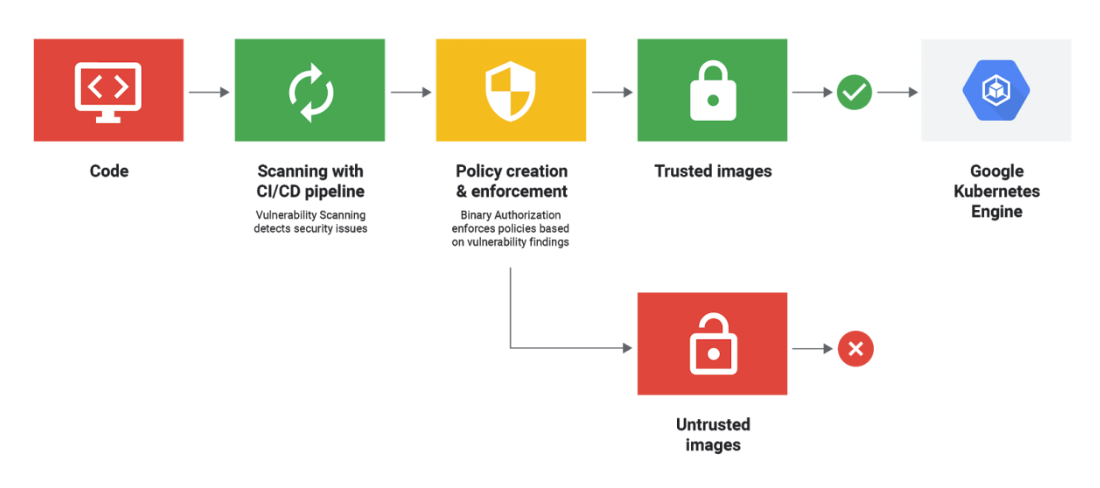
- Details
- Category: Technology
Read more: Google brings vulnerability scanning to its Cloud Build CI/CD platform
Write comment (100 Comments)After five months in public beta, Google today announced that its Cloud Memorystore for Redis, its fully managed in-memory data store, is now generally available.
The service, which is fully compatible with the Redis protocol, promises to offer sub-millisecond responsesfor applications that need to use in-memory caching. And because of its compatibility with Redis, developers should be able to easily migrate their applications to this service without making any code changes.
Cloud Memorystore offers two service tiers — a basic one for simple caching and a standard tier for users who need a highly available Redis instance. For the standard tier, Google offers a 99.9 percent availability SLA.
Since it first launched in beta, Google added a few additional capabilities to the service. You can now see your metrics in Stackdriver, for example. Google also added custom IAM roles and improved logging.
As for pricing, Google charges per GB-hour, depending on the service level and capacity you use. You can find the full pricing list here.
- Details
- Category: Technology
Read more: Google’s Cloud Memorystore for Redis is now generally available
Write comment (96 Comments)Autonomous vehicles and robots have to know how to get from A to B without hitting obstacles or pedestrians — but how can they do so politely and without disturbing nearby humans Thatwhat StanfordJackrabbot project aims to learn, and now a redesigned robot will be cruising campus learning the subtleties of humans negotiating one anotherpersonal space.
&There are many behaviors that we humans subconsciously follow & when I&m walking through crowds, I maintain personal distance or, if I&m talking with you, someone wouldn&t go between us and interrupt,& said grad student Ashwini Pokle in a Stanford News release. &We&re working on these deep learning algorithms so that the robot can adapt these behaviors and be more polite to people.&
Of course there are practical applications pertaining to last mile problems and robotic delivery as well. What do you do if someone stops in front of you What if therea group running up behind Experience is the best teacher, as usual.
The first robot was put to work in 2016, and has been hard at work building a model of how humans (well, mostly undergrads) walk around safely, avoiding one another while taking efficient paths, and signal what they&re doing the whole time. But technology has advanced so quickly that a new iteration was called for.
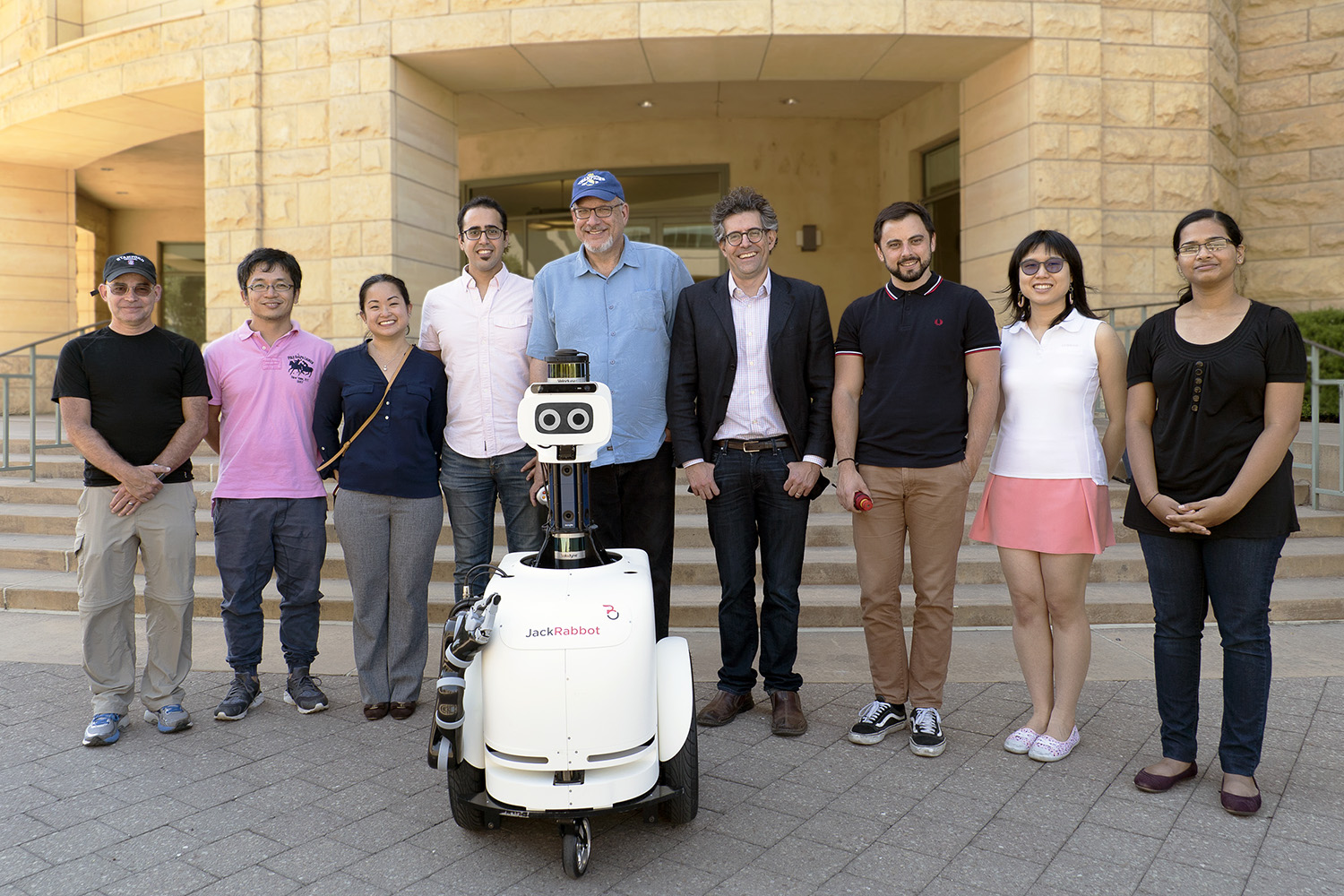
The JackRabbot project team with JackRabbot 2 (from left to right): Patrick Goebel, Noriaki Hirose, Tin Tin Wisniewski, Amir Sadeghian, Alan Federman, Silivo Savarese, Roberto Martín-Martín, Pin Pin Tea-mangkornpan and Ashwini Pokle
The new robot has a vastly improved sensor suite compared to its predecessor: two Velodyne lidar units giving 360 degree coverage, plus a set of stereo cameras making up its neck that give it another depth-sensing 360 degree view. The cameras and sensors on its head can also be pointed wherever needed, of course, just like ours. All this imagery is collated by a pair of new GPUs in its base/body.
Amir Sadeghian, one of the researchers, said this makes Jackrabbot 2 &one of the most powerful robots of its size that has ever been built.&
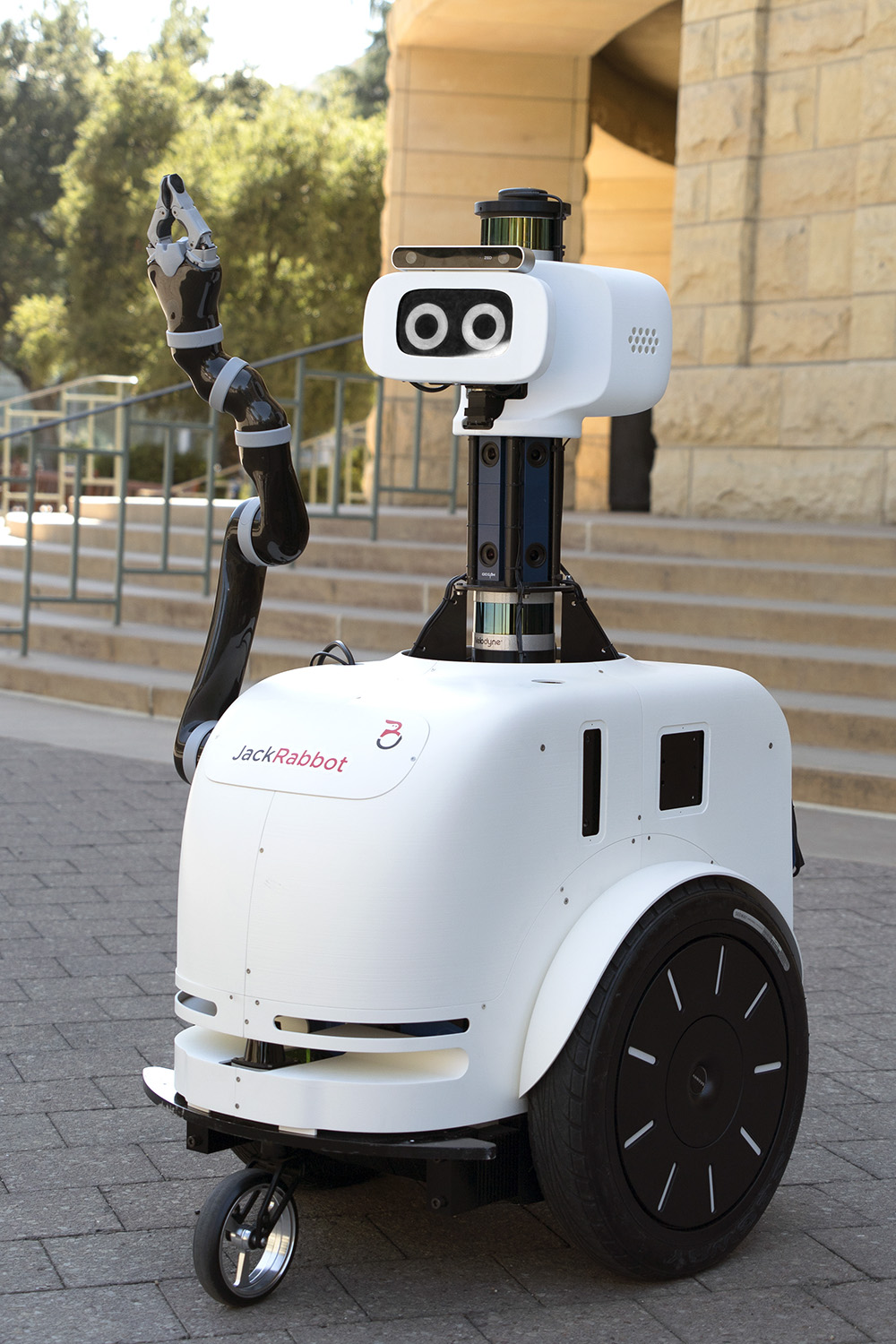
This will allow the robot to sense human motion with a much greater degree of precision than before, and also operate more safely. It will also give the researchers a chance to see how the movement models created by the previous robot integrate with this new imagery.
The other major addition is a totally normal-looking arm that Jackrabbot 2 can use to gesture to others. After all, we do it, right When itunclear who should enter a door first or what side of a path they should take, a wave of the hand is all it takes to clear things up. Usually. Hopefully this kinked little gripper accomplishes the same thing.
Jackrabbot 2 can zoom around for several hours at a time, Sadeghian said. &At this stage of the project for safety we have a human with a safety switch accompanying the robot, but the robot is able to navigate in a fully autonomous way.&
Having working knowledge of how people use the space around them and how to predict their movements will be useful to startups like Kiwi, Starship, and Marble. The first time a delivery robot smacks into someonelegs is the last time they consider ordering something via one.
- Details
- Category: Technology
Read more: ‘Jackrabbot 2’ takes to the sidewalks to learn how humans navigate politely
Write comment (94 Comments)Lime is waging a war against theSan FranciscoMunicipal Transporation Agency (SFMTA), claiming the organization actedwith &unlawful bias& and &sought to punish Lime& when it chose not to award the e-scooter and dockless bike startup a permit to operate in San Francisco last month.
Lime has sent an appeal to the SFMTA, requesting an &unbiased hearing officer& reevaluate its application to participate in the city12-month pilot program for e-scooter providers. The SFMTA, however, says they are &confident& they picked the right companies in Scoot and Skip.
&After a thorough, fair and transparent review process, we are confident we selected the strongest applicants to participate in the one-year scooter pilot,& a spokesperson for SFMTA said in a statement provided to TechCrunch. &Scoot and Skip demonstrated the highest level of commitment to our cityvalues of prioritizing public safety, promoting equity and ensuring accountability. Limeappeal will go to an independent hearing officer for further consideration.&
San Franciscopermit process came as a result of Lime and its competitors, Bird andSpin,deploying their scooters without permission in the city this March. As part of a new city law, which went into effect in June, scooter startups are not able to operate in San Francisco without a permit.
Lyft,Skip, Spin, Lime, Scoot, ofo, Razor, CycleHop, USSCooter and Ridecell all applied forpermits.
Now, Lime is arguing the selection process was unfair and that because it deployed scooters in the city without asking permission — the Uber model of expansion — the SFMTA intentionally rejected its application despite its qualifications.
&The SFMTA ignored the fact that Scootprice is twice that of other applicants, including Lime, and that Scoot declined to offer any discounted cash payment option to low-income users, as required by law,& Lime wrote in a statement today. &SFMTA inexplicably avoided inclusion of these factors as evaluation criteria and instead deemed Scoot ‘satisfactory& because they ‘agreed to comply.'&
When Lime learned of its rejection on Aug. 30, CEO Toby Sun said he was disappointed and planned to appeal the decision.
&San Franciscans deserve an equitable and transparent process when it comes to transportation and mobility. Instead, the SFMTA has selected inexperienced scooter operators that plan to learn on the job, at the expense of the public good …The SFMTAhandling of the dockless bike and scooter share programs has lacked transparency from the beginning. We call on the MayorOffice and Board of Supervisors to hold the SFMTA accountable for a flawed permitting process.As a San Francisco-based company, this is where we live and work. We want to serve this community.&
Though Lime wasn&t able to successfully sway San Francisco authorities, it was given permission to operate in Santa Monica last month alongsideBird, Lyft and JUMP Bikes.
E-scooters are expected to return to the streets of San Francisco on Oct. 15.
- Details
- Category: Technology
The gun rights activist who waged a very public legal war over the right to freely distribute 3D-printed gun schematics over the internet is facing serious charges that have nothing to do with firearms.
According to a law enforcement press conference today, Cody Wilson, 30, is believed to have traveled to Taipei after learning that he was under investigation for sexually assaulting a 16-year-old. Wilson, who travels frequently, also missed his scheduled return flight.
According to an affidavit filed on Wednesday, Wilson is charged with the sexual assault of a 16-year-old girl in Travis County, Texas. The affidavit describes how Wilson, an Austin resident, began communicating with the alleged victim under the handle &Sanjuro& using the website &SugarDaddyMeet.com.&
The two continued talking via iMessage and Wilson allegedly identified himself to the victim and mentioned that he was a &big deal,& prompting her to find his name featured in recent news stories. In addition to his high-profile role in the debate over 3D-printed firearms, Wilson also attracted attention when he founded Hatreon, a crowdfunding site for fundraisers that violated the rules of sites like Patreon and Kickstarter.
The affidavit, published in full onArs Technica, details how the two met in person on August 15 at a local coffee shop and Wilson then took the victim to a hotel in a vehicle registered to his company, Defense Distributed. The victim alleges that the sexual assault took place at AustinArcher hotel, after which Wilson paid her $500. Surveillance footage corroborates the victimstory.
Austinpolice department is coordinating with international authorities to bring him back to the country to face the second-degree felony charges, which could be punishable by up to 20 years in prison.
Update:A reporter with the Austin American-Statesman reports that the U.S. Marshals have issued a wanted poster for Wilson.
- Details
- Category: Technology
Read more: Facing sexual assault charges, 3D-printed gun advocate Cody Wilson evades US authorities
Write comment (95 Comments)Although the spotlight at this weekSpaceX event was squarely on Japanese billionaire Yusaku Maezawa — the first paying passenger for the companynascent space tourism business — Elon Musk also revealed a wealth of new details about the BFR and just how this enormous rocket and spacecraft will get to the moon and back.
In a lengthy (one might even say rambling, in the true Musk style) presentation, we were treated to cinematic and technical views of the planned rocket, which is already under construction and could take flight as early as a couple years from now — and Musk then candidly held forth on numerous topics in a lengthy Q-A period. As a result we learned quite a bit about this newly redesigned craft-in-progress.
Are you sitting comfortably Good. Hope you like pictures of spaceships!
(Note: Quotes are transcribed directly from the video but may have been very slightly edited for clarity, such as the removal of &you know& and &like.&)
BFR is &ridiculously big&
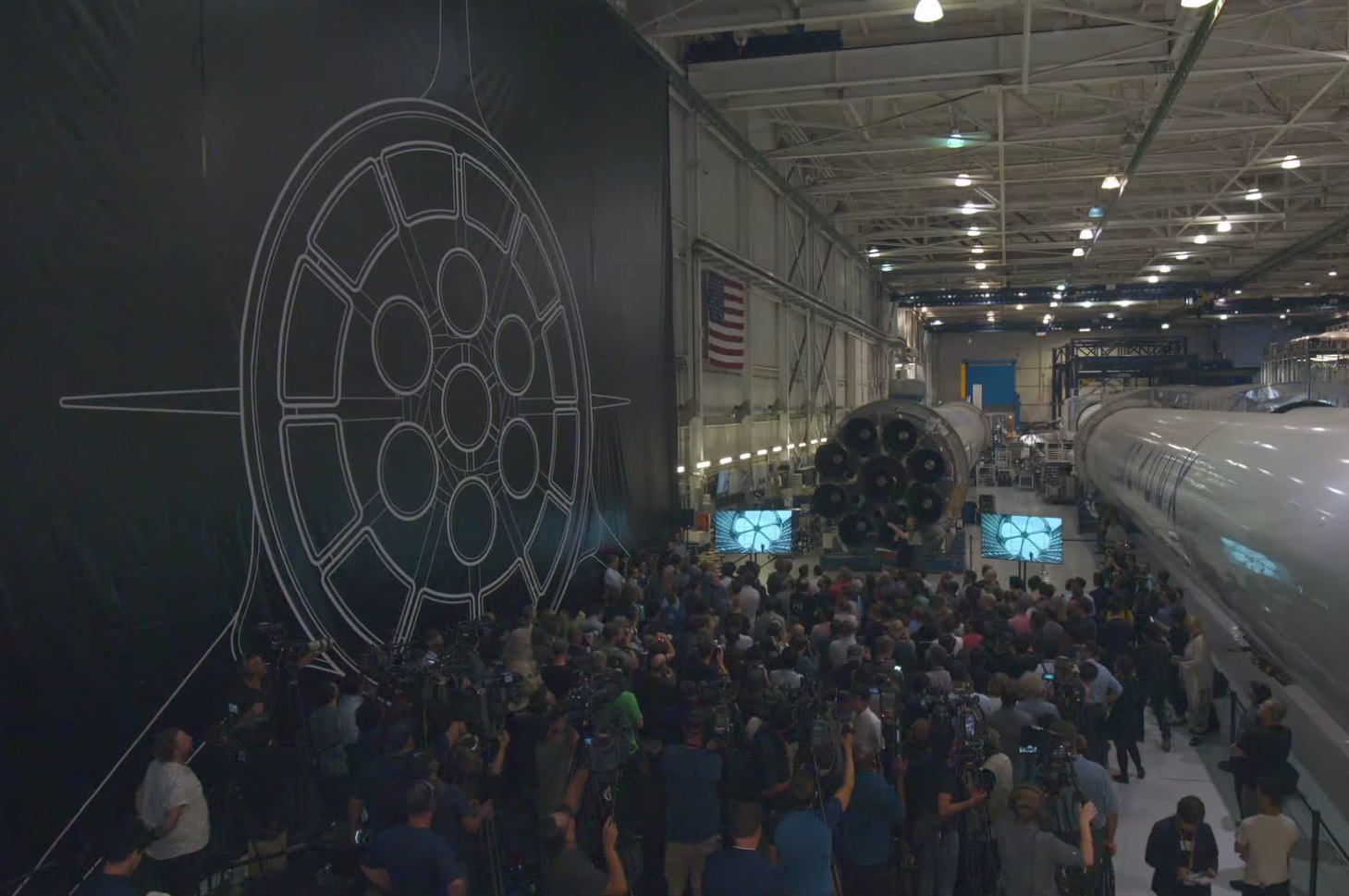
Well, thatnot really news — itright there in the name. But now we know exactly how ridiculously big.
&The production design of BFR is different in some important ways from what I presented about a year ago,& Musk said, including its dimensions. The redesigned spacecraft (or BFS) will be 118 meters in length, or about 387 feet; just under half of that, 55 meters, will be the spacecraft itself. Inside you have about 1,100 cubic meters of payload space. Thatall around 15-20 percent larger than how it was last described. Its max payload is 100 metric tons to low Earth orbit.
&I mean, this is a ridiculously big rocket,& he added. The illustration on the wall, he pointed out, is life-size. As you can see it dwarfs the crowd and the other rockets.
What will fit in there It depends on the mission, as you&ll see later.
No one knows what to call the fin-wing-things
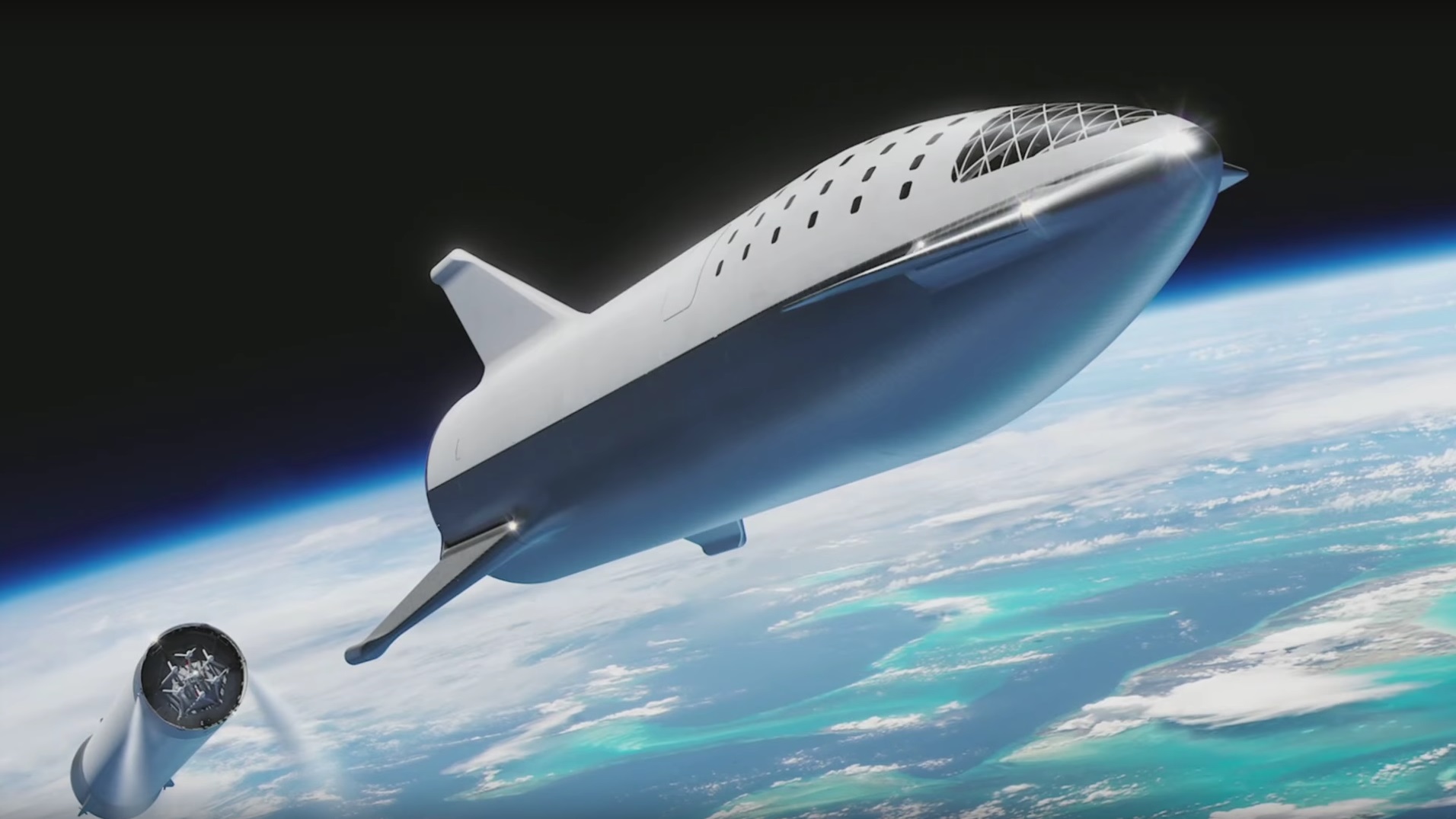
Although Musk was clear on how the spacecraft worked, he was still a little foggy on nomenclature — not because he forgot, but because the parts don&t really correspond exactly with anything in flight right now. &There are two forward and two rear actuated wings, or fins,& he said. They don&t really fit the definition of either, he suggested — especially since they also act as legs.
The top fin &really is just a leg&
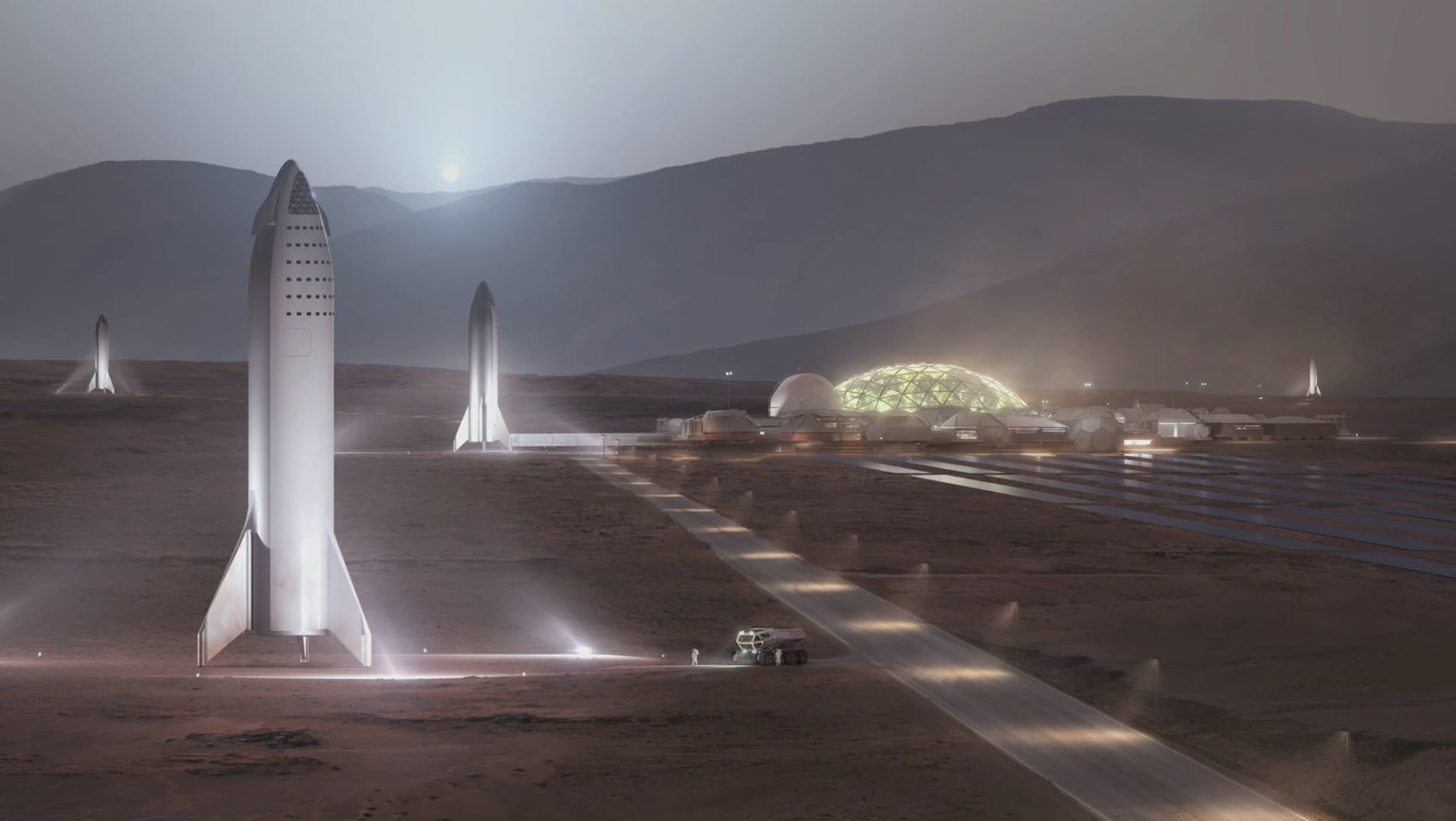
The fin on top of the craft gives it a very Space Shuttle-esque look, and it was natural that most would think that ita vertical stabilizer of some kind. But Musk shut that down quickly: &It doesn&t have any aerodynamic purpose — it really is just a leg.& He pointed out that during any atmospheric operations, the fin will be in the lee of the craft and won&t have any real effect.
&It looks the same as the other ones for purposes of symmetry,& he explained.
&If in doubt, go with Tintin&
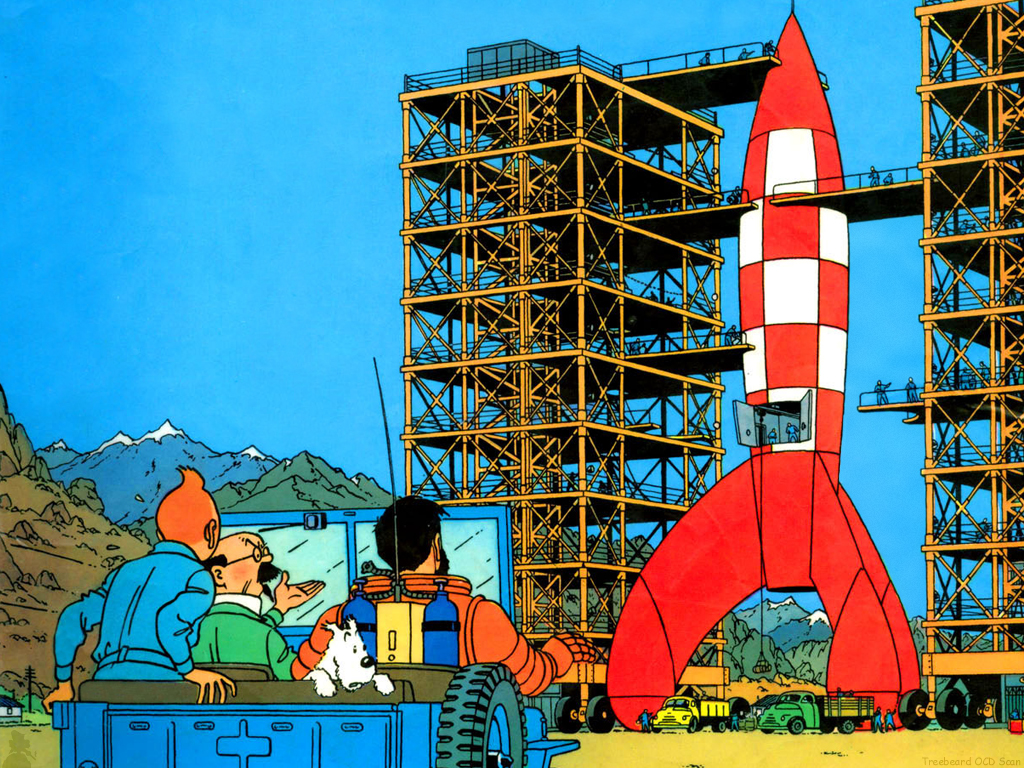
It was pointed out when the new design was teased last week that it bore some resemblance to the ship Tintin (and Captain Haddock, and Professor Calculus, et al.) pilot to the moon in the classic comics. Turns out this isn&t a coincidence.
&The iteration before this decoupled the landing legs from the control surfaces — it basically had 6 legs. I actually didn&t like the aesthetics of that design,& Musk said. &I love the Tintin rocket design, so I kind of wanted to bias it toward that. So now we have the three large legs, with two of them actuating as body flaps or large moving wings.&
&I think this design is probably on par with the other one. It might be better. Yeah, if in doubt, go with Tintin,& he said.
BFR is &more like a skydiver than an aircraft&
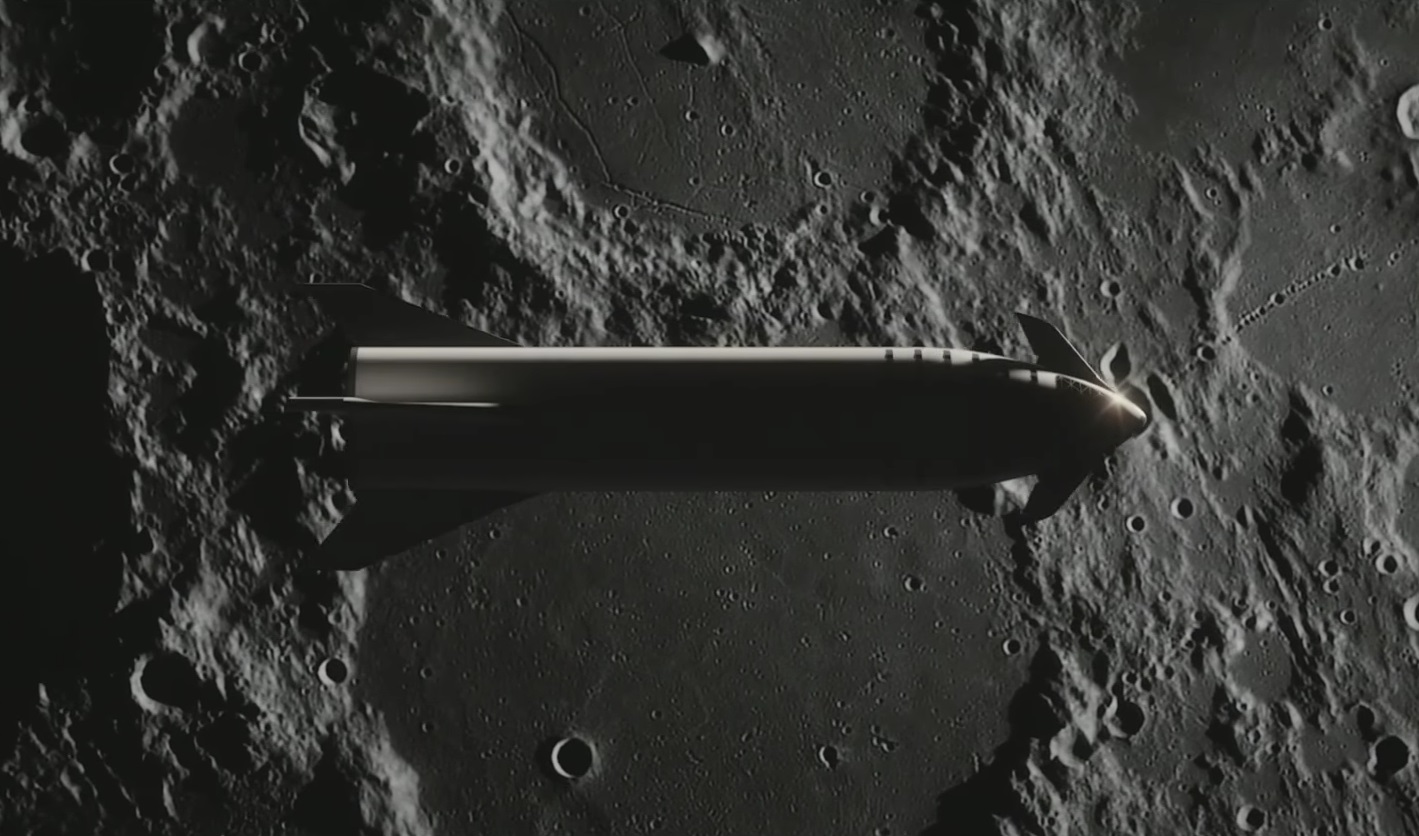
An interplanetary spacecraft doesn&t have the same design restrictions as a passenger jet, so it may fly completely differently.
&You want four control surfaces to be able to control the vehicle through a wide range of atmospheric densities and velocities,& Musk explained, referring to the four fin-wing-flaps. &The way it behaves is a bit more like a skydiver than an aircraft. If you apply normal intuition it will not make sense.&
Actually if you imagine the plane as a person falling to earth, and that person controlling their orientation by moving their arms and legs — their built-in flaps — it does seem rather intuitive.
Reentry will &look really epic&

&Almost the entire time it is reentering, itjust trying to brake, while distributing that force over the most area possible — it uses the entire body to brake,& Musk said. This is another point of similarity with the Space Shuttle, which used its heat-resistance bottom surface as a huge air brake.
&This will look really epic in person,& he enthused.
Of course, that only applies when therean atmosphere. &Obviously if you&re landing on the moon you don&t need any aerodynamic surfaces at all, because thereno air.&
The seven-engine configuration leaves a huge safety margin
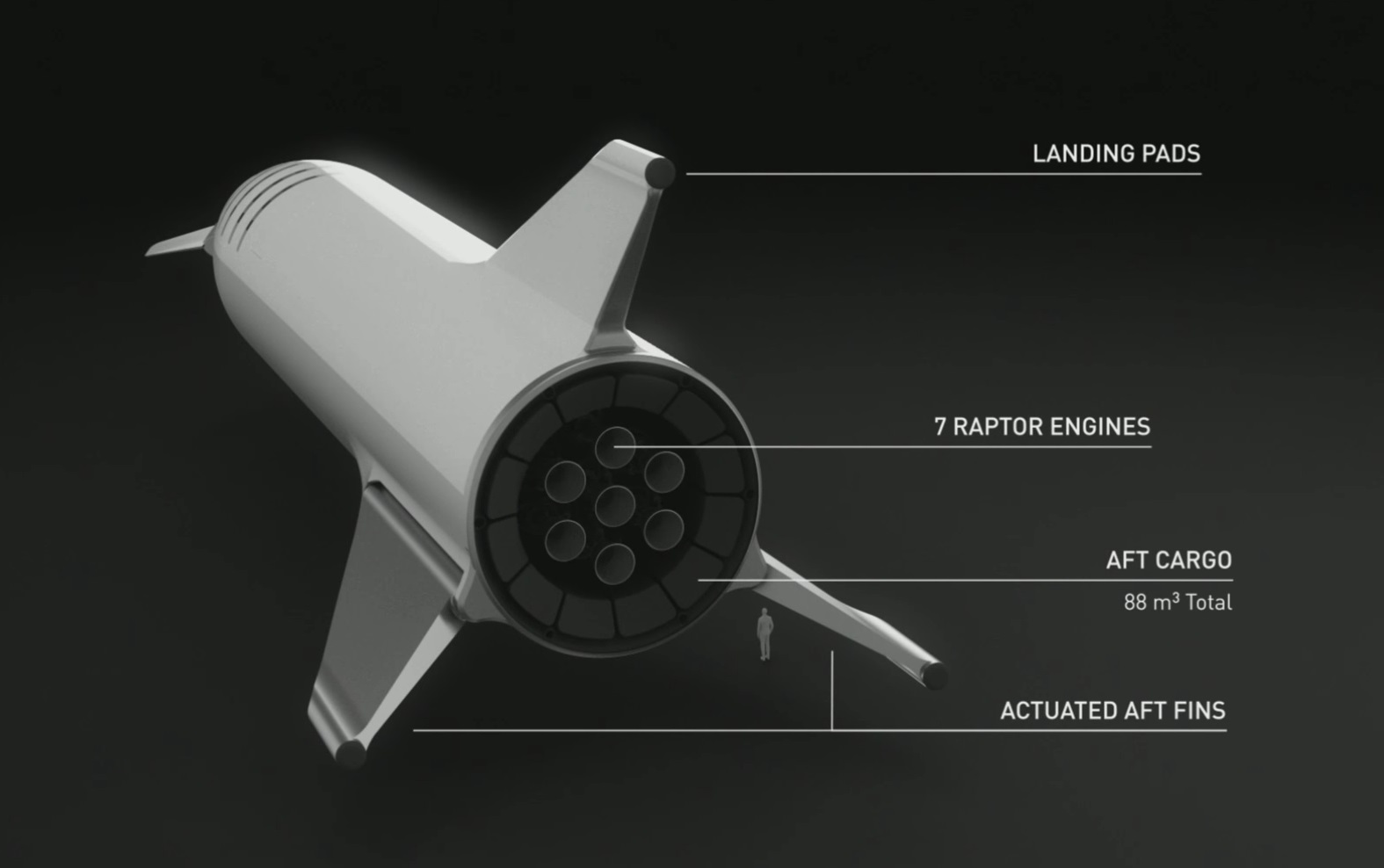
Astute observers like yours truly noticed that the number and arrangement of the craftRaptor engines had changed in the picture tweeted last week. Musk complimented the questioner (and by extension, me) for noting this and explained.
&In order to minimize the development risk and costs, we decided to harmonize the engine between the booster and the ship,& he said. In other words, it made more sense and cost less to put a similar type of Raptor engine on both the craft itself and the rocket that would take it to space. Previously the ship had been planned to have four large Raptor engines and two smaller sea-level engines for landing purposes. The trade-off, obviously, is that it will be a bit more costly to build the ship, but the benefits are manifold.
&Having the engines in that configuration, with seven engines, means itdefinitely capable of engine out at any time, including two engine out in almost all circumstances,& he said, referring to the possibility of an engine cutting out during flight. &In fact in some cases you could lose up to four engines and still be fine. It only needs three engines for landing.&
The booster, of course, will have considerably more thrusters — 31 to start, and as many as 42 down the road. (The number was not chosen arbitrarily, as you might guess.)
It has a deployable solar array
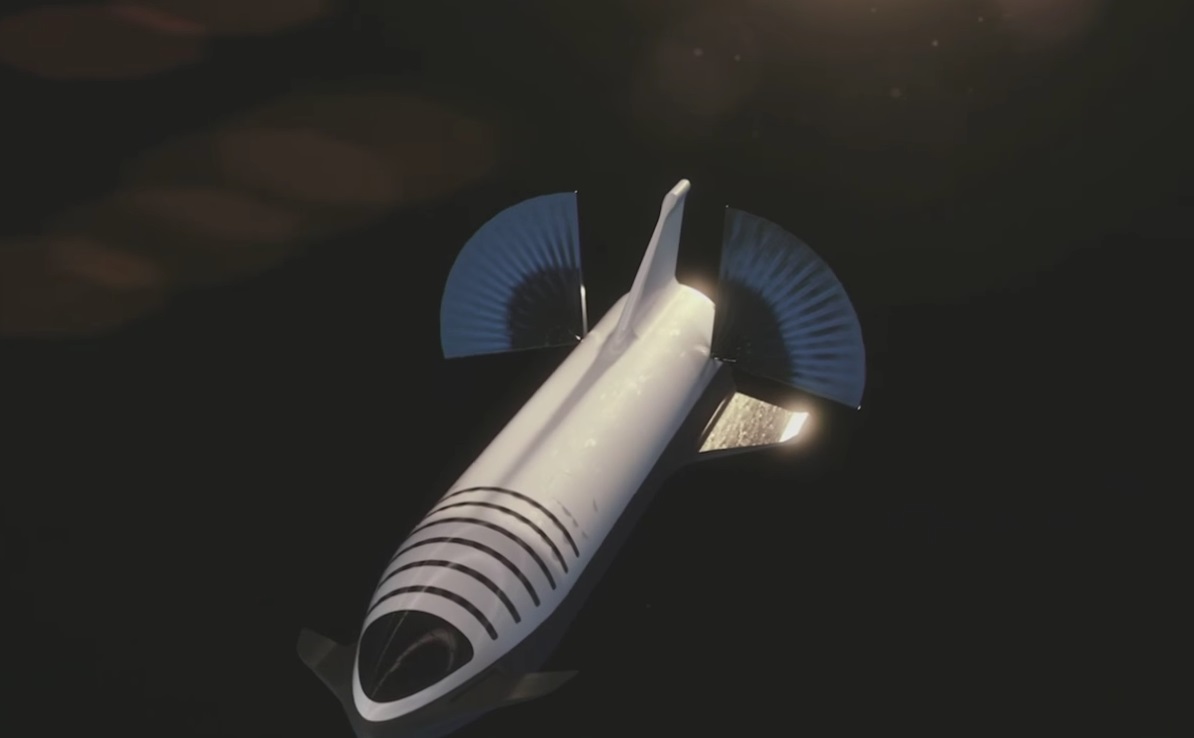
In the video explaining the mission, the BFS deploys a set of what appear to be solar panels from near the engines. How exactly this would work wasn&t explained at all — and in the images you can see there really isn&t a place for them to retract into. So this is likely only in the concept phase right now.
This isn&t exactly a surprise — solar is by far the most practical way to replenish small to medium amounts of electricity used for things like lights and life support, as demonstrated by most spacecraft and of course the International Space Station.
But until now we haven&t seen how those solar panels would be deployed. The fan structure at the rear would keep the panels out of view of passengers and pilots, and the single-stem design would allow them to be tilted and rotated to capture the maximum amount of sunlight.
The interior will depend on the mission

Although everyone is no doubt eager to see what the inside of the spaceship looks like, Musk cautioned that they are still at a concept stage there. He did say that they have learned a lot from the Crew Dragon capsule, however, and that will be plenty of shared parts and designs.
&Depending on the type of mission, you&d have a different configuration,& he explained. &If you were going to Mars thatat least a three-month journey. You want to have a cabin, like a common area for recreation, some sort of meeting rooms… because you&ll be in this thing for months.&
Water and air in a months-long journey would have to be a closed-loop system, he noted, though he didn&t give any indication how that would work.
But it will include &the most fun you can possibly have in zero G&

&Now if you&re going, say, to the moon or around the moon, you have a several-day journey,& Musk continued. But then he mused on what the spare space would be used for. &What is the most fun you can have in zero G That for sure is a key thing. Fun is underrated. Whatever is the most enjoyable thing you could possibly do — we&ll do that.&
Assuming the passengers have gotten over their space sickness, of course.
BFR will cost &roughly $5 billion& to develop
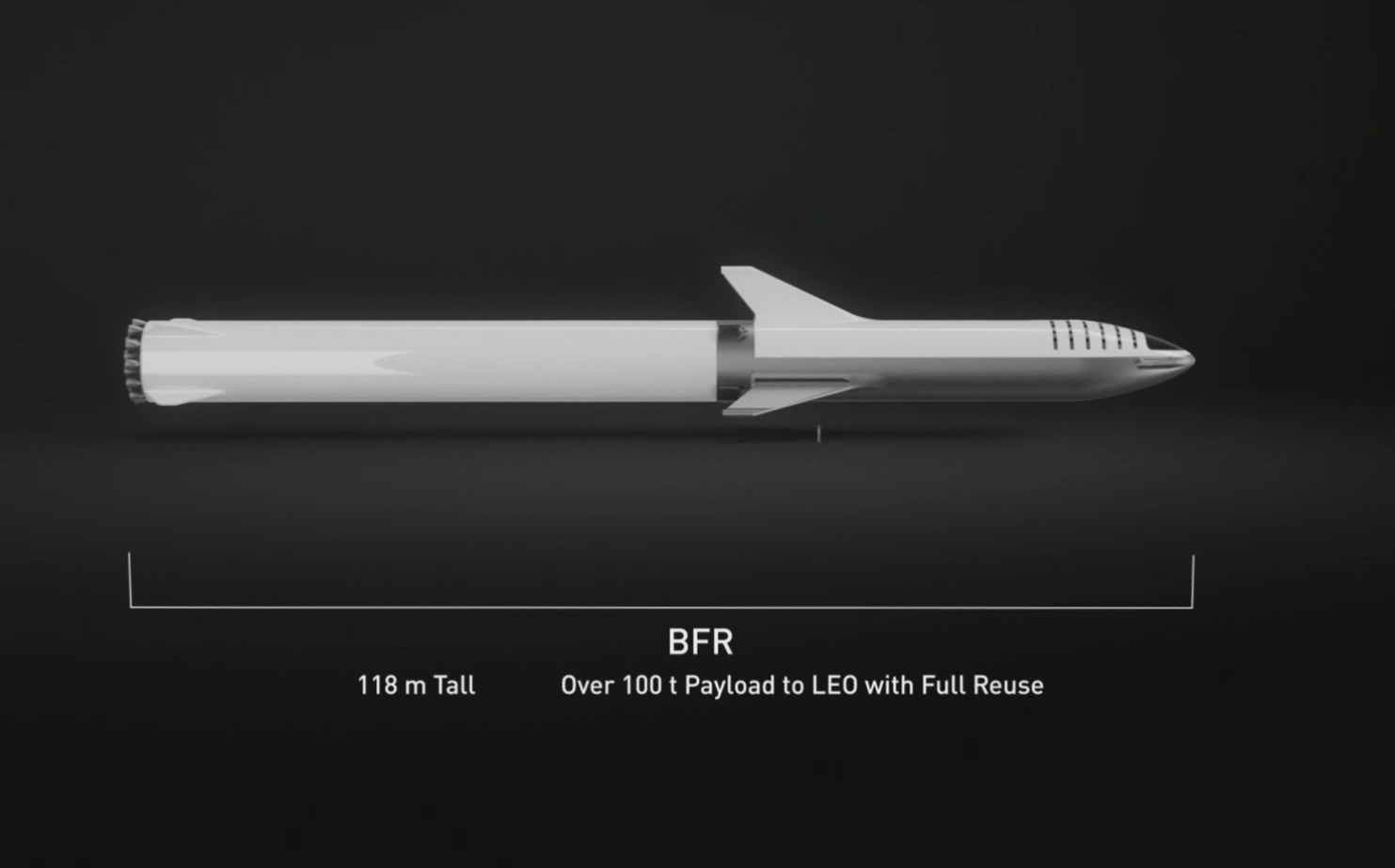
Musk was reticent to put any hard numbers out, given how early SpaceX is in development, but said: &If I were to guess it would be something like 5 billion dollars, which would be really quite a small amount for a project of this nature.&
Henot wrong. Just for a sense of scale, the Space Shuttle program would probably have cost nearly $200 billion in todaydollars. The F-35 program will end up costing something like $400 billion. These things aren&t directly comparable, of course, but they do give you a sense of how much money is involved in this type of thing.
Funding is still a semi-open question
Where exactly that money will come from isn&t totally clear, but Musk did point out that SpaceX does have reliable business coming from its International Space Station resupply missions and commercial launches. And next year, he pointed out, crewed launches could bring another source of income to the mix.
Thatin addition to Starlink, the satellite internet service in the offing. Thatstill in tests, of course (and Tintin-related, as well).
Yusaku Maezawaticket price is a &non-trivial& contribution
Although both men declined to elaborate on the actual price Maezawa paid, Musk did indicate it was considerable — and of course, healso essentially paying for the artists he plans to bring with him.
&Hemade a significant deposit on the price, which is a significant price and will actually have a material effect on paying for the cost of developing the BFR,& Musk said. &Ita non-trivial amount.&
But italready under construction
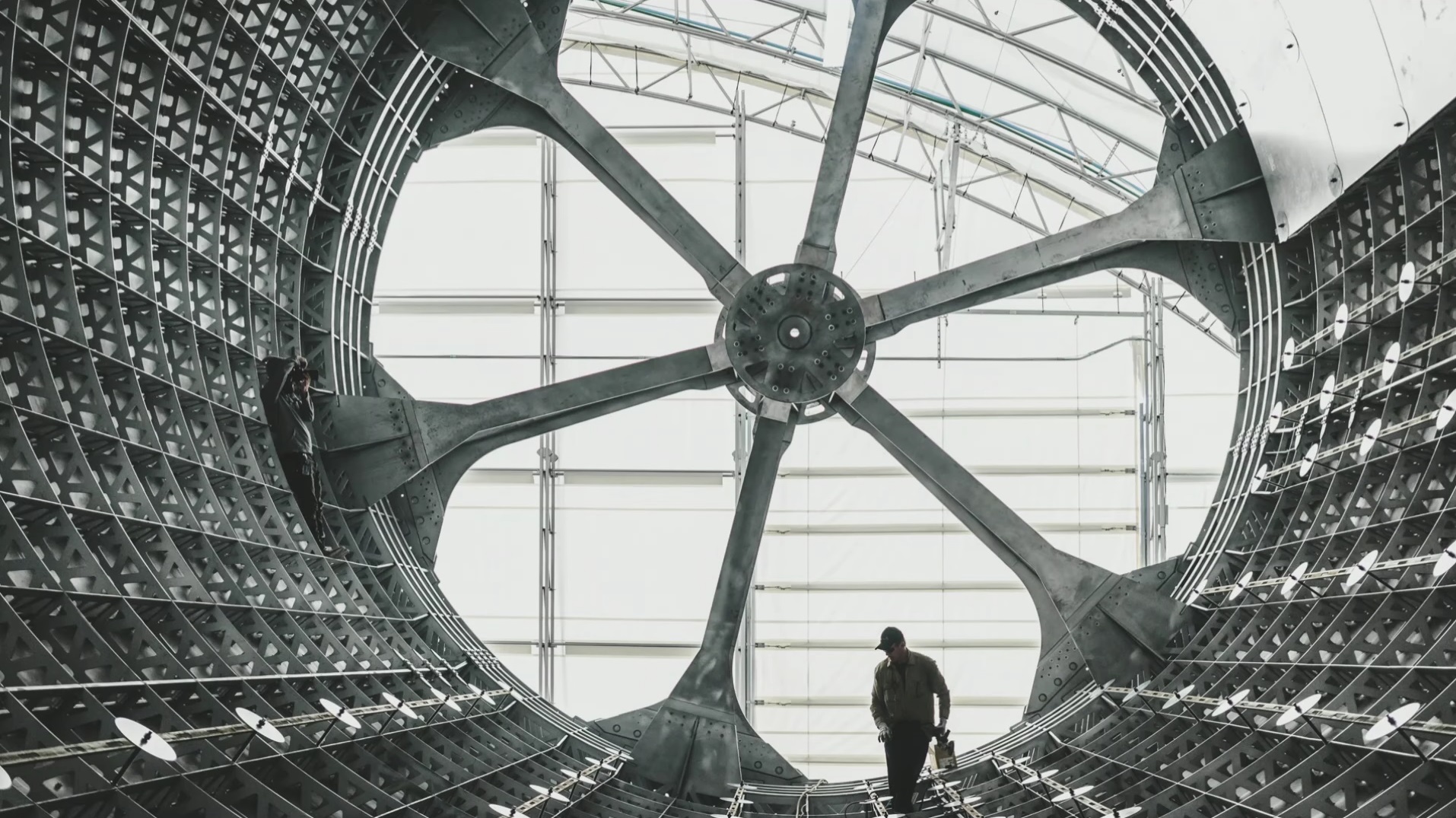
&We&re already building it. We&ve built the first cylinder section,& Musk said, showing an image of that part, 9 meters in diameter. &We&ll build the domes and the engine section soon.&
Test flights could begin as early as next year
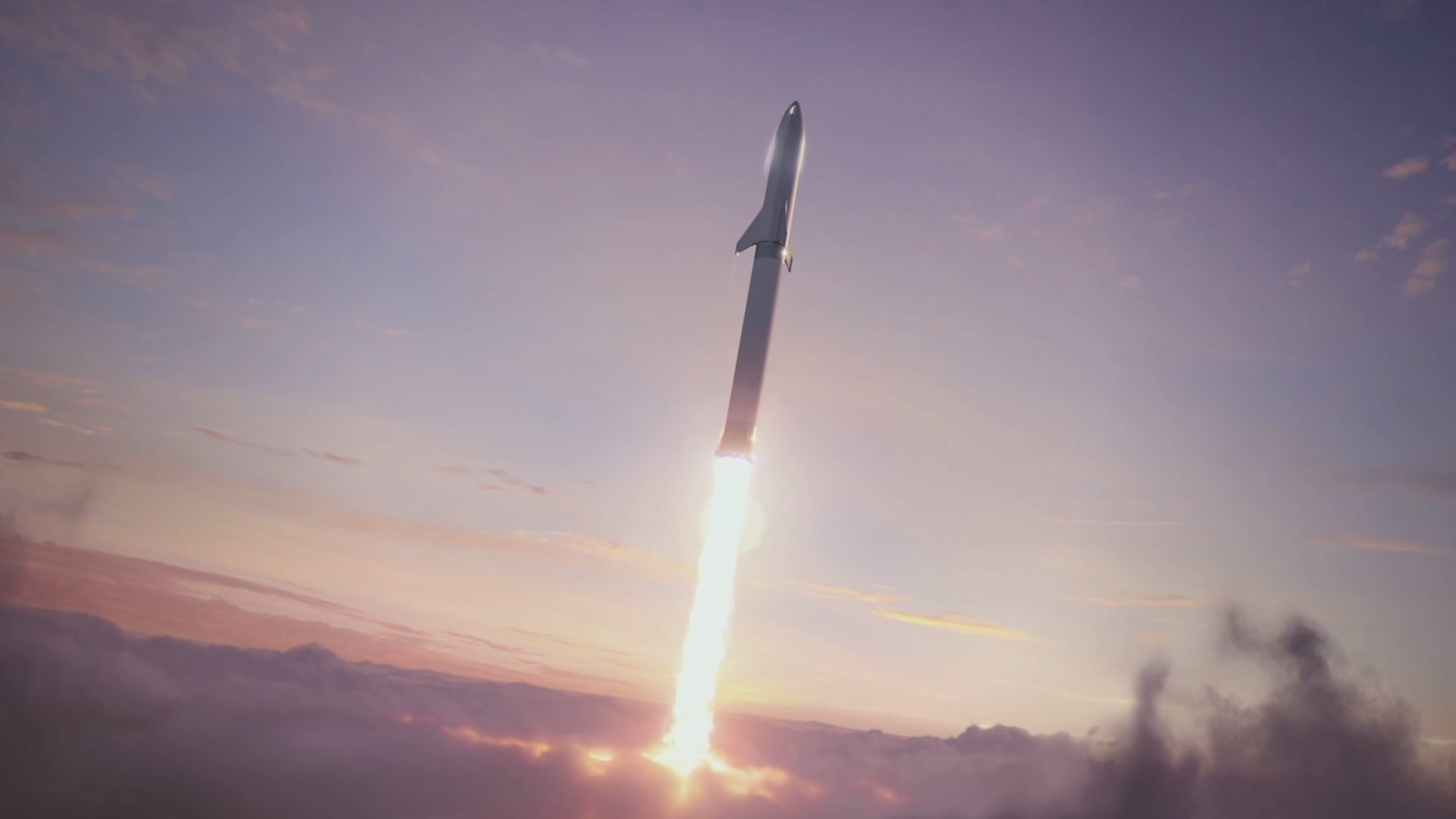
&We&ll start doing hopper flights next year,& Musk said. &Depending on how those go we&ll do high-altitude, high-velocity flights in 2020, then start doing tests of the booster. If things go well we could be doing the first orbital flights in about two to three years.&
This is the most optimistic scenario, he later clarified.
&We&re definitely not sure. But you have to set a date thatkind of like the ‘things go right& date.&
The circumlunar flight could &skim the surface& of the moon
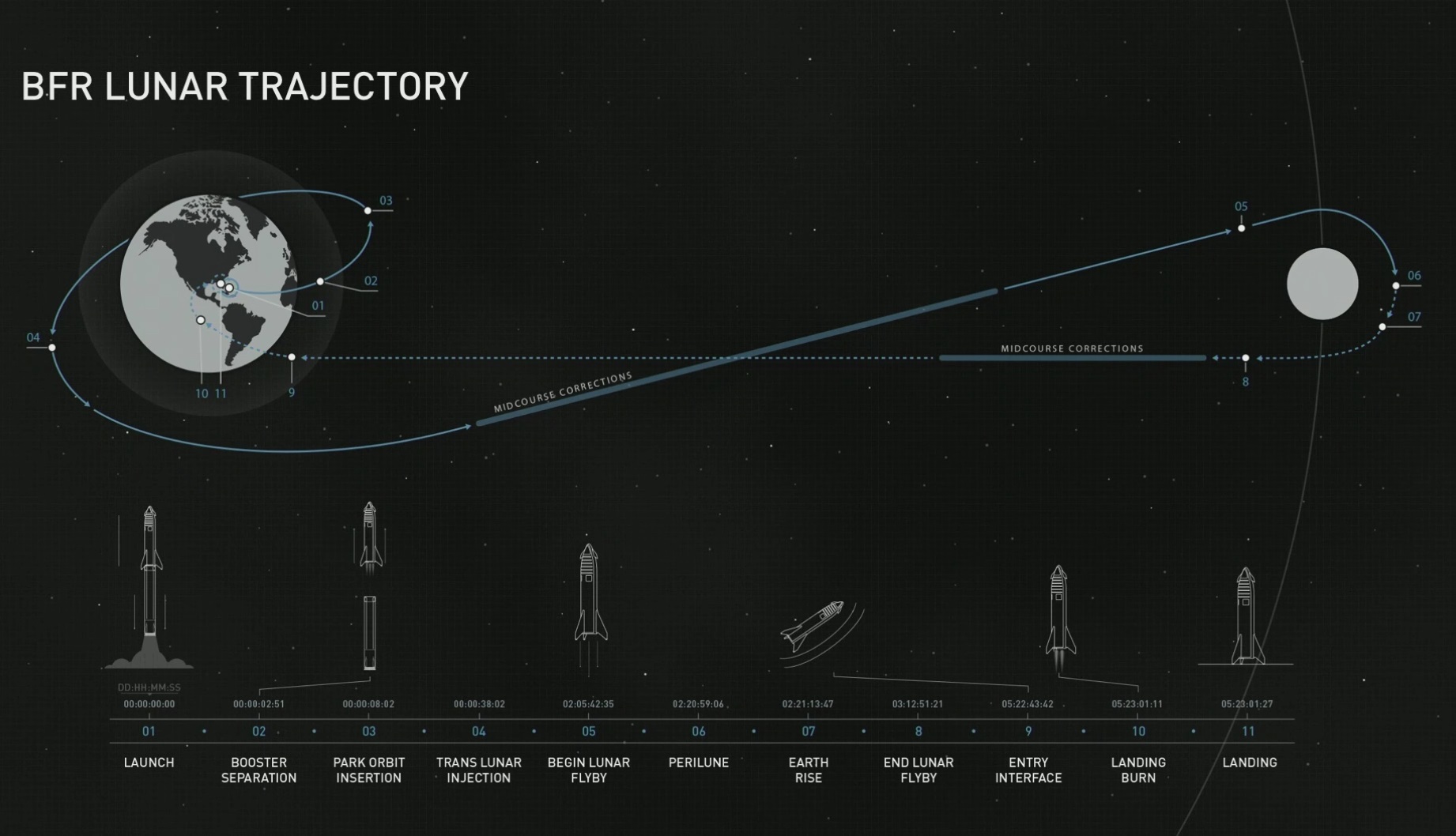
The flight plan for the trip around the moon is relatively straightforward, as lunar missions go. Launch, orbit Earth, thrust to zoom off towards the moon, use moongravity to boomerang back, and then land. But the exact path is to be determined, and Musk has ideas.
&I think it would be pretty exciting to like skim the surface,& he said, attempting to illustrate the orbit with gestures. &Go real close, then zoom out far, then come back around. In the diagram it looks kinda symmetric but I think you&d want to go real close.&
As the moon has no atmosphere, thereno question of the craft getting slowed down or having its path altered by getting closer to it. The orbital dynamics would change, of course, but the moontrajectory is nothing if not well understood, so itjust a question of how safe the mission planners want to play it, regardless of Muskfantasies.
&This is pretty off the cuff,& he admitted.
&This is a dangerous mission&
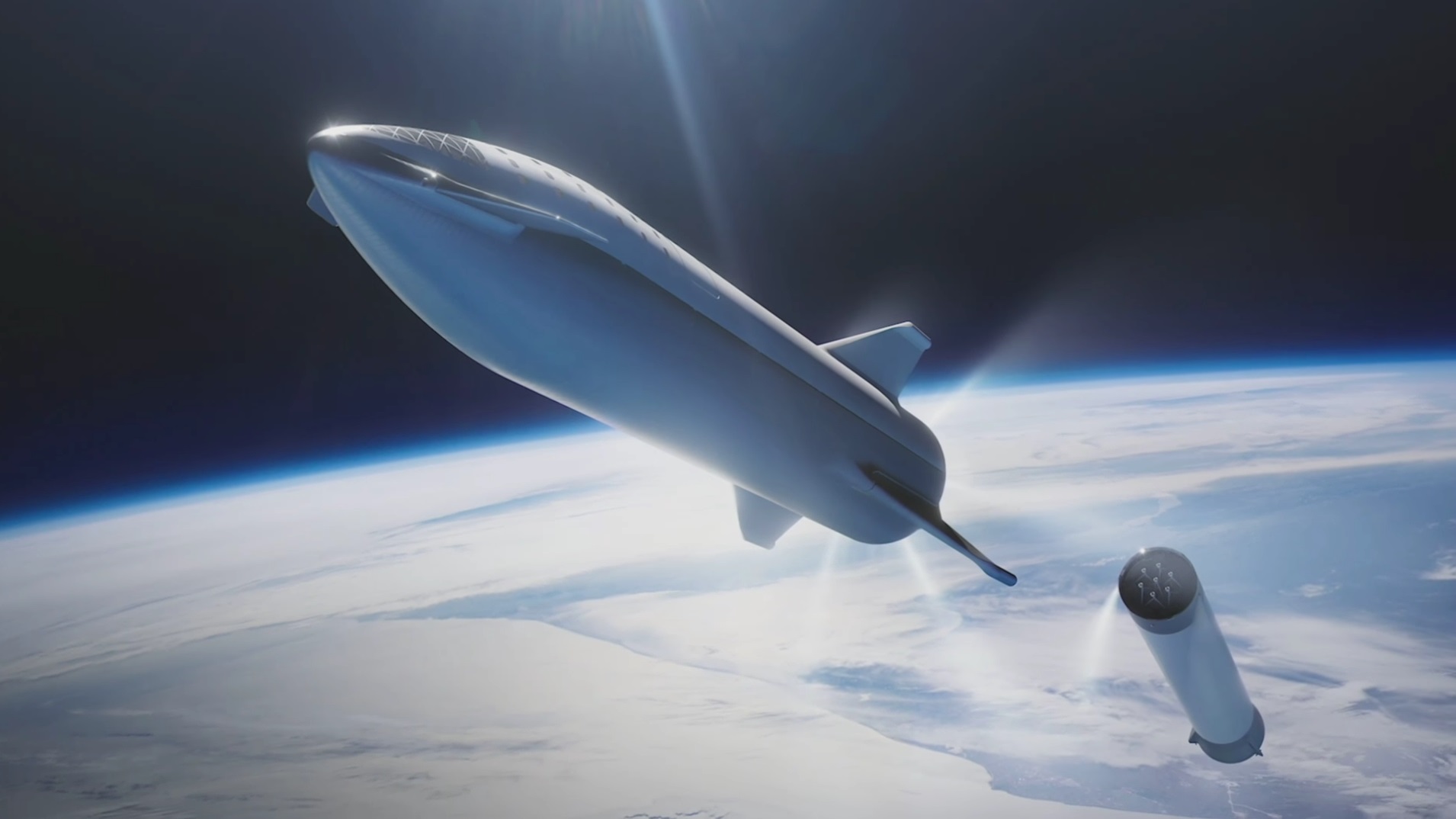
There will be plenty of tests before Maezawa and his artist friends take off.
&We&ll do many such test flights before putting any people on board. I&m not sure if we will actually test a flight around the moon or not, but probably we will try to do that without people before sending people.&
&That would be wise,& he concluded, seeming to make a decision then and there. But spaceflight is inherently risky, and he did not attempt to hide that fact.
&This is a dangerous mission,& he said. &We&ll leave a lot of extra room for extra food and oxygen, food and water, spare parts… you know, just in case.&
Maezawa, who was sitting next to him on stage, did not seem perturbed by this — he was certain to have assessed the risks before buying the ticket. In answer to a related question, he did indicate that astronaut-style training was in the plans, but the regimen was not yet planned.
It probably won&t even be called the BFR
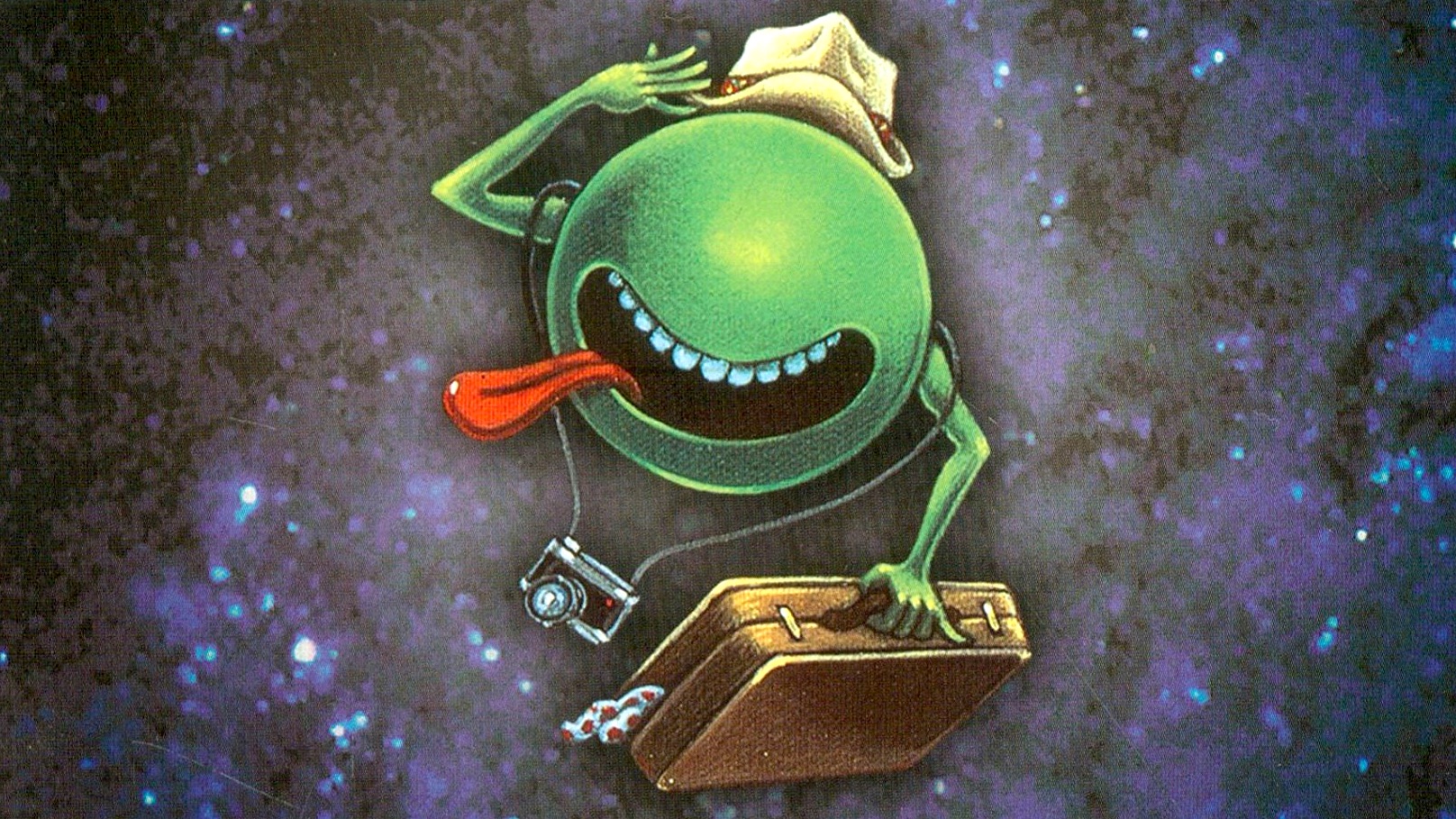
Thereno getting around the fact that BFR stands for &Big Fucking Rocket,& or at least thatwhat Musk and others have implied while coyly avoiding confirming. This juvenile naming scheme is in line with Tesla&s. Perhaps cognizant of posterity and the dignity of mankindexpansion into space, Musk suggested this might not be permanent.
&We should probably think of a different name,& he admitted. This was kind of a code name and it kind of stuck.&
Again, if it officially just stood for &Big Falcon Rocket,& this probably wouldn&t be an issue. But regardless, Musktrademark geeky sense of humor remained.
&The only thing is, we&d like to name the first ship that goes to Mars after — Douglas Adams, my favorite spaceship — the Heart of Gold, from HitchhikerGuide to the Galaxy.&
As far off as the moon mission is, the Mars mission is even further, and Musk changes his mind on nearly everything — but this is one thing I can sense hecommitted to.
- Details
- Category: Technology
Read more: 18 new details about Elon Musk’s redesigned, moon-bound ‘Big F*ing Rocket’
Write comment (100 Comments)Page 4131 of 5614

 10
10





